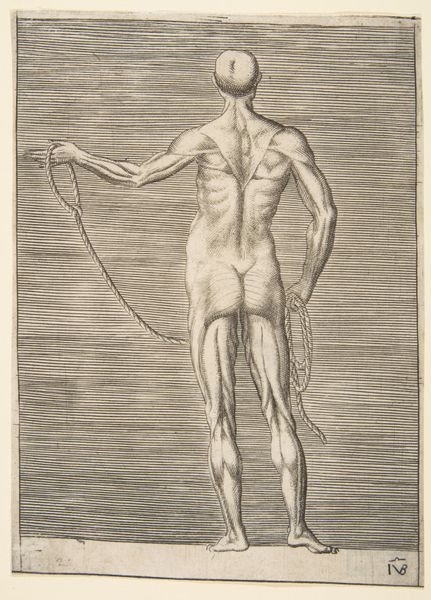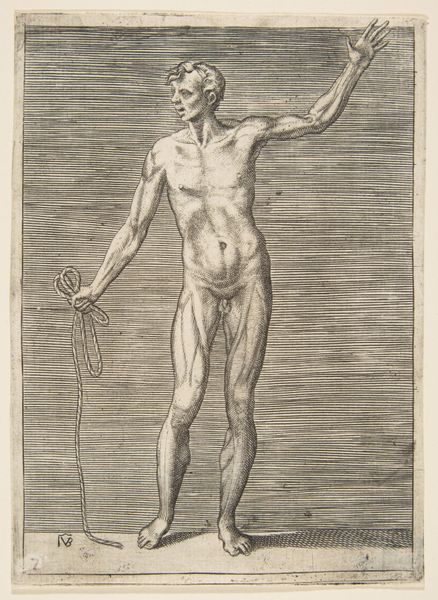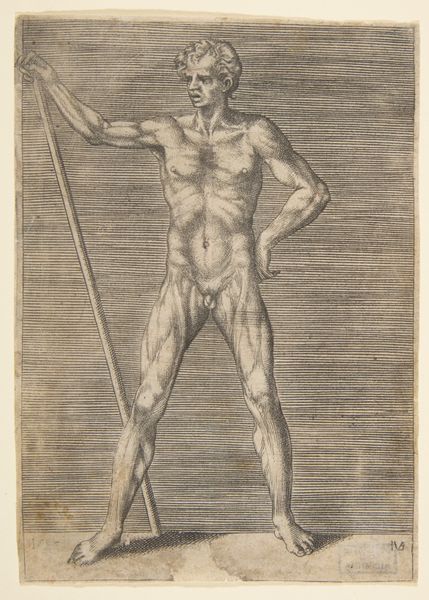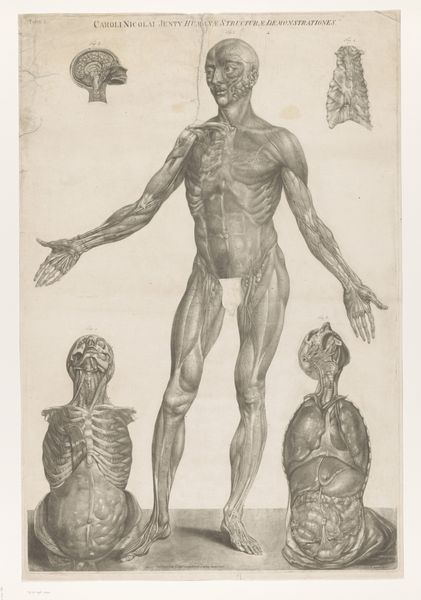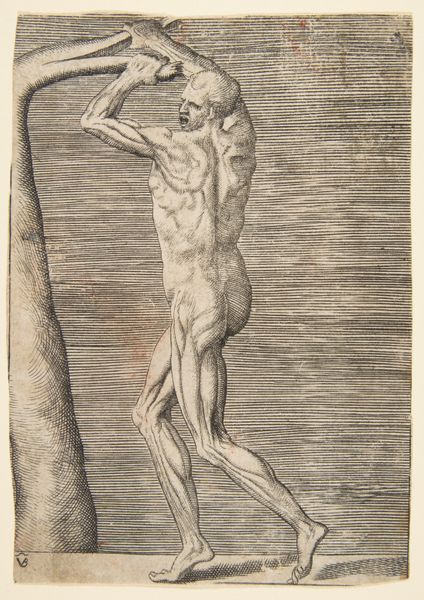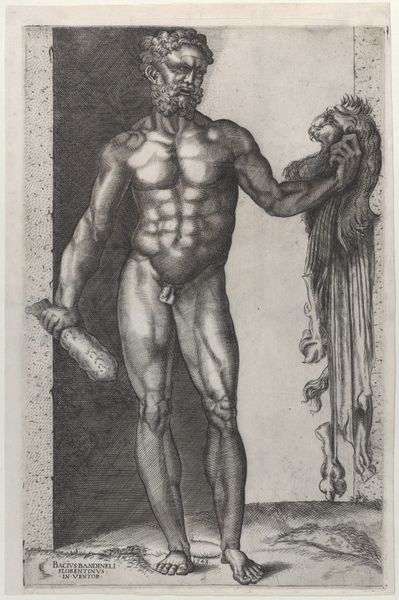
Man seen from the Front, holding the Skin of his right Arm and Leg in his right Hand 1531 - 1590
0:00
0:00
drawing, print, engraving
#
pencil drawn
#
drawing
# print
#
mannerism
#
figuration
#
pencil drawing
#
portrait drawing
#
nude
#
engraving
#
male-nude
Dimensions: sheet: 5 7/8 x 4 7/16 in. (15 x 11.3 cm)
Copyright: Public Domain
Editor: This is Giulio Bonasone’s "Man seen from the Front, holding the Skin of his right Arm and Leg in his right Hand," an engraving from sometime between 1531 and 1590. It's incredibly… strange! The way he’s peeling back his own skin – what should we make of that? Curator: What I see is a reflection on the body as both material and a site of labor. The act of 'peeling back' can be viewed as a dissection, a revealing of the inner workings. How does Bonasone employ engraving techniques here, and how might they mirror or subvert the labor inherent in creating the human form? Editor: It is precise, almost scientific, but also theatrical! The skin almost looks like a discarded garment. How does the choice of engraving – a reproducible medium – affect your reading? Curator: Precisely. Engraving, as a reproductive method, democratizes access to this anatomical exploration, contrasting with the often exclusive domain of the art academy. It connects to a broader culture of consumption of knowledge and how it's circulated among different social strata. It begs the question: who was the intended consumer of these images? Editor: So it's not just about the body, but about knowledge production and access, and how that relates to artmaking? That's fascinating. Curator: Exactly. By focusing on the material processes and their accessibility, we shift the conversation from pure aesthetics to consider how the production and dissemination of images themselves shape our understanding of the world and ourselves. Editor: I never thought about art in terms of production, but now I can appreciate the craft more deeply. Curator: Looking closely at material choices encourages different narratives. Every artwork has a biography and the cultural moment where it originated.
Comments
No comments
Be the first to comment and join the conversation on the ultimate creative platform.

